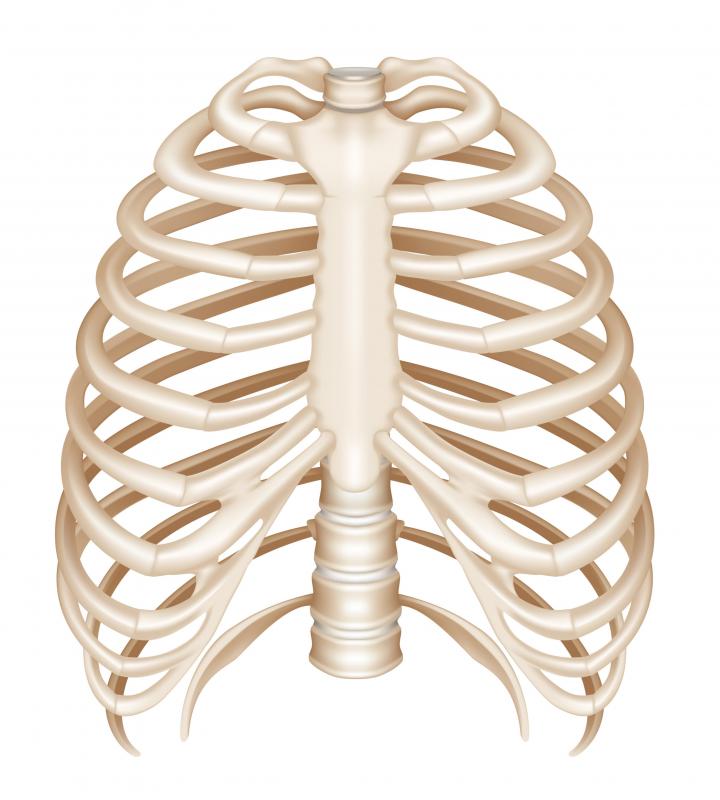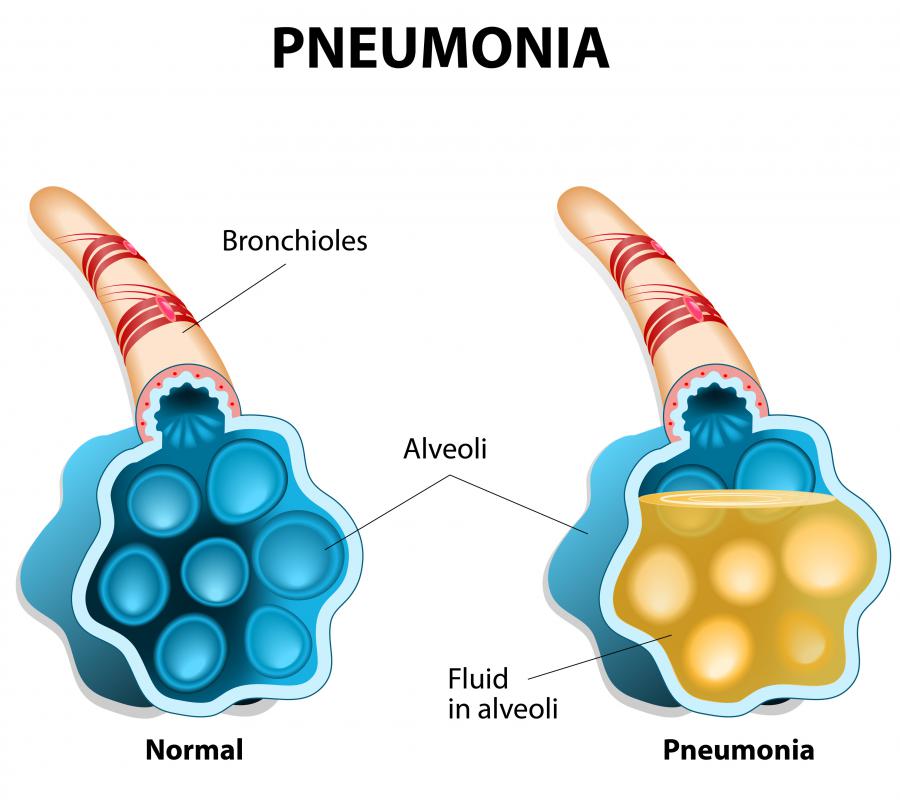At WiseGEEK, we're committed to delivering accurate, trustworthy information. Our expert-authored content is rigorously fact-checked and sourced from credible authorities. Discover how we uphold the highest standards in providing you with reliable knowledge.
What is a Thoracostomy?
Thoracostomy is a surgical opening or incision in the thoracic cavity. The medical world is constantly advancing and evolving. At this time, there are three main procedures for thoracostomy: chest tube thoracostomy, needle thoracostomy, and expansion thoracostomy.
Chest tube thoracostomy is among the most common procedures. Patients usually refer to it as “putting in a chest tube” since it involves putting a hollow tube into the chest in order to drain air, blood, or fluid from the area around the lungs. Patients with pneumonia, cancer, or traumatic injuries can suffer from excess blood or fluid in the space surrounding the lungs. In other injuries, a lung can become punctured, causing air to surround the lung and leading to its collapse. The chest tube works in conjunction with a special machine by sucking out the air, fluid, or blood surrounding the lung.

Although the chest tube thoracostomy can help most patients and give them increased comfort, there are some risks. Among the least alarming is some pain during the placement of the tube. Usually, a local anesthetic is used, but there can be some discomfort during the insertion. Another minor risk is bleeding from a blood vessel during the tube’s insertion. The most serious concern is infection, if bacteria are present on the tube.

In emergency medicine, a needle thoracostomy can be a life-saving procedure. It is most commonly used with patients who are deteriorating quickly with tension pneumothorax. A needle is inserted into specific spots in the chest; afterwards a chest tube is inserted to complete the drainage. There are complications that can arise, such as failure to stop the deterioration of the patient, bleeding, and infection, as mentioned above.

Lastly, expansion thoracostomy can be used in some cases. It is the insertion of a Vertical Expandable Prosthetic Titanium Rib (VEPTR™) that is used to treat conditions such as thoracic insufficiency syndrome. With thoracic insufficiency syndrome, the chest is unable to support the healthy, normal growth of the lungs or the spine. The VEPTR™ devices will make room in the chest cavity for the lungs or the spine to grow.

In the expansion thoracostomy procedure, separations are made to between the ribs to make the chest larger or if the ribs are congenitally joined, they are separated. Then, the VEPTR™ devices are used to make room for growth. The recovery period is long, but the procedure produces amazing results. For more information, consult a surgeon who specializes in the procedure.
AS FEATURED ON:
AS FEATURED ON:














Discussion Comments
I became interested in learning more about tension pneumothorax after I suffered one ten years ago. At the time, I didn't listen much to what the doctors were saying because I was fighting for air and panicking. After I got home from the hospital, I read up on what actually happened to me.
In a tension pneumothorax, air builds up, and the pressure completely collapses at least one lung. This affects the entire cardiovascular system in a bad way. The pressure either slows or stops the flow of blood back to the heart from the veins. Since the heart has little blood to pump to the arteries, blood pressure goes down, and other organs are affected quickly.
If I hadn't been rushed to the hospital, I could have died. I really felt like I was dying on the way there. It felt like drowning.
My little sister had a spontaneous pneumothorax. They said it happened when a cyst on the surface of her lung ruptured.
It was very scary to us, because she said she had sharp chest pains and her heart rate shot up. She had trouble catching her breath, and her skin turned bluish because she wasn't getting enough oxygen.
We rushed her to the hospital, where they diagnosed her and placed a chest tube in her body to drain the air that was pressing in on her lung and preventing her from getting a good breath. She recovered rather quickly, but now we are overprotective of her, because we are afraid it could happen again.
My seventeen-year-old cousin got pneumonia and had to have a chest tube thoracostomy. I was surprised to learn that patients stay awake for this procedure.
The doctor cleaned her skin and injected a local anesthetic. He also injected it deeper along the path the tube would take to numb the entire area. He then used a scalpel to cut a slit between her ribs.
The tube was a little smaller than your average pinky finger. He guided it into her chest and stitched it in place so that it would not slip out. Then, he put a sterile bandage across the insertion area.
My uncle had a chest tube thoracostomy to drain fluid around his lungs. His cancer had caused fluid to build up in his pleural space, and it needed to be drained.
They placed the chest tube between his ribs into the pleural space to drain the fluid. The tube was hooked to a suction machine. They left the tube in his chest for a few days, until they felt confident that they had gotten all of the fluid. They also used the tube to administer medicine to help prevent future fluid buildup.
Post your comments